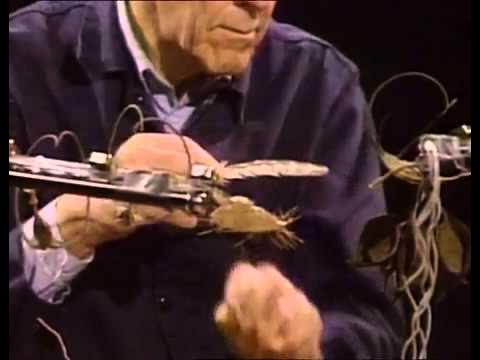VIK MUNIZ I lixo extraordinário: vida e obra
Summary
TLDRIn this video, art educator Mayara introduces the Brazilian visual artist Vik Muniz, known for his innovative use of unconventional materials like food, recyclable items, and even trash in his artwork. Muniz, who works across painting, sculpture, and photography, is celebrated for reinterpreting famous works of art and creating impactful, politically-charged pieces. His series 'Sugar Children' and the documentary 'Waste Land' brought him international acclaim. The video also encourages viewers to create their own art using unusual materials, inspired by Muniz’s creative process. The artist's unique approach and socially conscious themes are highlighted throughout the presentation.
Takeaways
- 😀 Vick Muniz is a Brazilian visual artist known for his use of unusual materials in his artwork, including food, recyclables, and trash.
- 😀 Muniz was born in 1961 in São Paulo, Brazil, and now lives and works in both New York and Rio de Janeiro.
- 😀 Muniz's art focuses on sustainability, and he works with various mediums, including painting, sculpture, and photography.
- 😀 His creative process often involves using everyday materials like jelly, peanut butter, chocolate, cotton, and even dust to create striking visual works.
- 😀 Muniz is famous for reinterpreting famous artworks using unconventional materials, such as recreating the Mona Lisa using grape jelly and peanut butter in 1999.
- 😀 His *Sugar Children* series (1996) brought him international recognition, depicting Caribbean children working on sugar plantations using sugar as the material for the artwork.
- 😀 Muniz has worked on several politically charged pieces, including his *Lampedusa* installation (2015), which critiqued European border policies regarding refugees.
- 😀 In 2010, Muniz created the documentary *Waste Land*, which focuses on the lives of garbage pickers at the Jardim Gramacho landfill in Rio de Janeiro and received international acclaim.
- 😀 The artist is also known for his mass appeal and even contributed to the opening sequence of the Brazilian soap opera *Passione* in 2010.
- 😀 The key characteristic of Muniz’s work is his ability to combine art with critical social commentary, turning everyday materials into powerful visual statements.
Q & A
Who is Vick Muniz, and what is his artistic background?
-Vick Muniz is a Brazilian visual artist born in 1961 in São Paulo. He is known for his creative works using unusual materials and for his focus on sustainability. Muniz has lived and worked in New York and Rio de Janeiro, producing art that includes painting, sculpture, and photography.
What types of materials does Vick Muniz use in his artwork?
-Muniz is famous for using a wide range of unconventional materials in his artwork, including food, cotton, recyclable materials, hair, wire, sawdust, dust, and earth.
How did Vick Muniz's approach to art begin?
-In the early 1980s, Vick Muniz decided to focus on visual art. He moved to the United States, where he lived in Chicago for a year before settling in New York, where he opened his art studio.
What is one of Muniz's most famous reinterpretations, and what materials did he use?
-One of Muniz's most famous reinterpretations is of Leonardo da Vinci's *Mona Lisa*. He recreated the painting using grape jelly and peanut butter on a plain white background.
What was the significance of the *Sugar Children* series created by Vick Muniz?
-The *Sugar Children* series, created in 1996, was Muniz's first work to gain international recognition. It depicted Caribbean children working in sugar cane fields, with the artist using sugar to reconstruct their portraits, symbolizing the harsh labor conditions they faced.
What political message did Vick Muniz convey with his *Lampedusa* installation?
-The *Lampedusa* installation, presented at the Venice Biennale in 2015, harshly criticized European policies regarding the refusal to open borders to refugees, addressing global migration and humanitarian issues.
How did the documentary *Waste Land* contribute to Vick Muniz’s fame?
-*Waste Land* (2010) is a documentary about Muniz’s collaboration with garbage collectors at the Jardim Gramacho landfill in Rio de Janeiro. The film won awards at the Sundance and Berlin Film Festivals and was nominated for an Academy Award for Best Documentary.
What kind of work did Vick Muniz create for the Brazilian soap opera *Passione*?
-Vick Muniz created the opening sequence for the Brazilian soap opera *Passione* in 2010. This project further showcased his artistic reach and ability to blend art with popular culture.
What are some of the everyday materials Vick Muniz uses in his artwork?
-Muniz has used a variety of everyday materials such as jelly, chocolate, peanut butter, ketchup, syrup, and trash in his works, showcasing his ability to transform ordinary items into complex artistic representations.
How does Vick Muniz's work challenge traditional perceptions of art?
-Muniz challenges traditional art by using non-traditional materials and by addressing social and political issues through his creations. His works invite viewers to reconsider the boundaries of what can be considered art and the role of materials in the artistic process.
Outlines

This section is available to paid users only. Please upgrade to access this part.
Upgrade NowMindmap

This section is available to paid users only. Please upgrade to access this part.
Upgrade NowKeywords

This section is available to paid users only. Please upgrade to access this part.
Upgrade NowHighlights

This section is available to paid users only. Please upgrade to access this part.
Upgrade NowTranscripts

This section is available to paid users only. Please upgrade to access this part.
Upgrade Now5.0 / 5 (0 votes)





